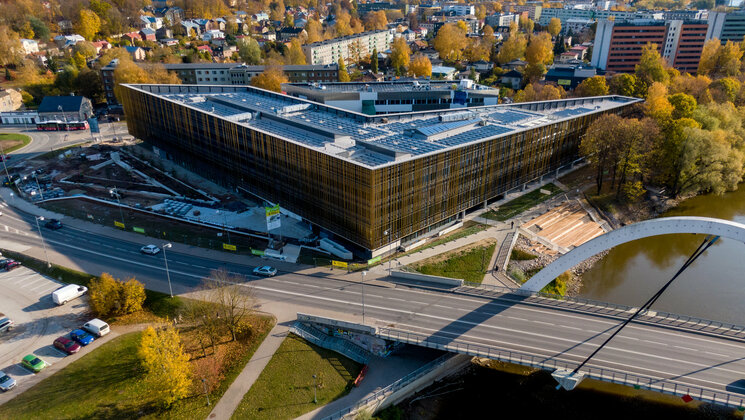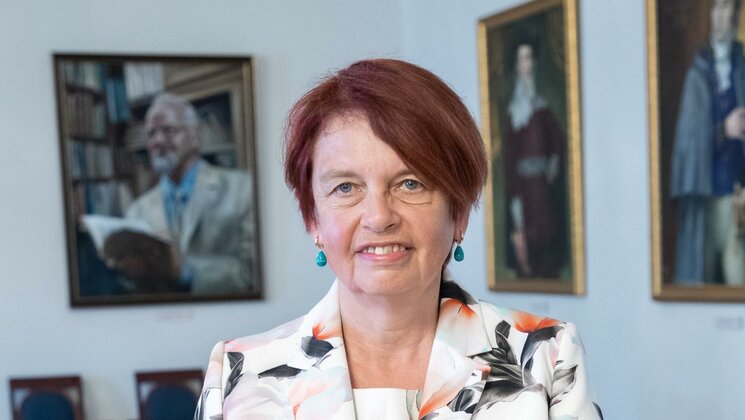-
Faculty of Arts and HumanitiesJakobi 2, r 116-121 51005 Tartu linn, Tartu linn, Tartumaa ESTJakobi 2 51005 Tartu linn, Tartu linn, Tartumaa ESTJakobi 2, IV korrus 51005 Tartu linn, Tartu linn, Tartumaa ESTJakobi 2, III korrus, ruumid 302-337 51005 Tartu linn, Tartu linn, Tartumaa ESTÜlikooli 16 51003 Tartu linn, Tartu linn, Tartumaa ESTLossi 3 51003 Tartu linn, Tartu linn, Tartumaa ESTÜlikooli 18 50090 Tartu linn, Tartu linn, Tartumaa ESTPosti 1 71004 Viljandi linn, Viljandimaa ESTJakobi 2 51005 Tartu linn, Tartu linn, Tartumaa ESTJakobi 2 51005 Tartu linn, Tartu linn, Tartumaa ESTFaculty of Social SciencesLossi 36 51003 Tartu linn, Tartu linn, Tartumaa ESTJakobi 5 51005 Tartu linn, Tartu linn, Tartumaa ESTLossi 36, ruum 301 51003 Tartu linn, Tartu linn, Tartumaa ESTNarva mnt 18 51009 Tartu linn, Tartu linn, Tartumaa ESTNäituse 2 50409 Tartu linn, Tartu linn, Tartumaa ESTNäituse 20 - 324 50409 Tartu linn, Tartu linn, Tartumaa ESTLossi 36 51003 Tartu linn, Tartu linn, Tartumaa ESTRaekoja plats 2 20307 Narva linn, Ida-Virumaa ESTRingi 35 80012 Pärnu linn, Pärnu linn, Pärnumaa ESTLossi 36 51003 Tartu linn, Tartu linn, Tartumaa ESTLossi 36 51003 Tartu linn, Tartu linn, Tartumaa ESTFaculty of MedicineRavila 19 50411 Tartu linn, Tartu linn, Tartumaa ESTBiomeedikum, Ravila 19 50411 Tartu linn, Tartu linn, Tartumaa ESTNooruse 1 50411 Tartu linn, Tartu linn, Tartumaa ESTL. Puusepa 1a 50406 Tartu linn, Tartu linn, Tartumaa ESTL. Puusepa 8 50406 Tartu linn, Tartu linn, Tartumaa ESTRavila 19 50411 Tartu linn, Tartu linn, Tartumaa ESTUjula 4 51008 Tartu linn, Tartu linn, Tartumaa ESTRavila 50411 Tartu linn, Tartu linn, Tartumaa ESTRavila 19 50411 Tartu linn, Tartu linn, Tartumaa ESTFaculty of Science and TechnologyVanemuise 46 - 208 51003 Tartu linn, Tartu linn, Tartumaa ESTNarva mnt 18 51009 Tartu linn, Tartu linn, Tartumaa ESTRiia 23b/2 51010 Tartu linn, Tartu linn, Tartumaa ESTRavila 14a 50411 Tartu linn, Tartu linn, Tartumaa ESTNarva mnt 18 51009 Tartu linn, Tartu linn, Tartumaa ESTRiia 23, 23b - 134 51010 Tartu linn, Tartu linn, Tartumaa ESTObservatooriumi 1 61602 Tõravere alevik, Nõo vald, Tartumaa ESTNooruse 1 50411 Tartu linn, Tartu linn, Tartumaa ESTJ. Liivi tn 2 50409 Tartu linn, Tartu linn, Tartumaa ESTVanemuise 46 51003 Tartu linn, Tartu linn, Tartumaa ESTVanemuise 46 51003 Tartu linn, Tartu linn, Tartumaa ESTArea of Academic SecretaryLossi 3 51003 Tartu linn, Tartu linn, Tartumaa ESTUppsala 6, Lossi 36 51003 Tartu linn, Tartu linn, Tartumaa ESTArea of Head of FinanceÜlikooli 17 51005 Tartu linn, Tartu linn, Tartumaa ESTArea of Director of AdministrationÜlikooli 18A (III korrus) 51005 Tartu linn, Tartu linn, Tartumaa ESTÜlikooli 18, ruumid 102, 104, 209, 210 50090 Tartu linn, Tartu linn, Tartumaa ESTArea of Vice Rector for DevelopmentNarva mnt 18 51009 Tartu linn, Tartu linn, Tartumaa ESTVanemuise 46 51003 Tartu linn, Tartu linn, Tartumaa ESTLossi 25 51003 Tartu linn, Tartu linn, Tartumaa ESTArea of RectorArea of Vice Rector for Academic AffairsUppsala 10 51003 Tartu linn, Tartu linn, Tartumaa ESTÜlikooli 18b 51005 Tartu linn, Tartu linn, Tartumaa ESTArea of Vice Rector for ResearchW. Struve 1 50091 Tartu linn, Tartu linn, Tartumaa EST
22.08.2005
STRUVE’S GEODETIC ARC INSCRIBED IN UNESCO WORLD HERITAGE LIST
The work carried out under Dr. Struve’s supervision in Tartu during
1816-1855 was of considerable importance for determining the shape and
size of the Earth and represented an important step in the development
of astronomy, geodetics and cartography. The measurement of the arc
constituted a rare example of collaboration for a scientific
cause between the scientists and rulers of a number of countries.
UNESCO World Heritage List now includes the arc with its remaining 34 points, of which 3 are located in Estonia—one in the Observatory in Tartu and two in Simuna, in the Virumaa County. The markings used for the points are mostly cairns or lead-filled holes drilled into rock. The northern and southern tips of the arc are marked by obelisks.
The arc goes through the territory of 10 contemporary nations—Norway, Sweden, Finland, Russia, Estonia, Latvia, Lithuania, Byelorus, the Ukraine, and Moldova. The joint application of the countries concerned to seek inscription was presented to UNESCO by the Finnish Minister of Culture in January 2004.
F.G.W. Struve (1793-1864) was a UT graduate. During 1813-1820, he worked as the Observer in the Tartu Observatory. In 1820-1839 he was Director of the Observatory and Professor of Astronomy. Dr. Struve was also Member of the Academy of Sciences of St. Petersburg. After leaving Tartu, he became Director of Pulkovo Observatory (Russia). Struve also played a central role in the trigonometrical survey of Livonia. He was looking for and researched double stars, of which he later published a catalogue. Struve also conjectured, as early as in 1847, that light would be absorbed in interstellar space—a proposition that was proved only in 1930.
UT and the City of Tartu are currently preparing plans for developing the Toome Hill area, including restoring the Observatory and turning it into a museum. The Tartu Observatory is a significant monument in the history of astronomy and surveying in the whole world.
With the Struve Arc, Estonia now has two inscriptions in the UNESCO World Heritage list, the other one being the Old Town of Tallinn, the capital city.
UNESCO’s list of Masterpieces of Oral and Intangible Heritage of Humanity includes the Estonian tradition of Song and Dance Festivals and the cultural space of the tiny Kihnu island.
Illari Lään
Head, UT Public Relations and Information Office
Further information: Ms Reet Mägi, Director of UT History Museum, tel. +372-737-5675, +372-50-40826, Mr Tõnu Viik, Senior Researcher at the Tartu Observatory, tel. +372-50-89045
UNESCO World Heritage List now includes the arc with its remaining 34 points, of which 3 are located in Estonia—one in the Observatory in Tartu and two in Simuna, in the Virumaa County. The markings used for the points are mostly cairns or lead-filled holes drilled into rock. The northern and southern tips of the arc are marked by obelisks.
The arc goes through the territory of 10 contemporary nations—Norway, Sweden, Finland, Russia, Estonia, Latvia, Lithuania, Byelorus, the Ukraine, and Moldova. The joint application of the countries concerned to seek inscription was presented to UNESCO by the Finnish Minister of Culture in January 2004.
F.G.W. Struve (1793-1864) was a UT graduate. During 1813-1820, he worked as the Observer in the Tartu Observatory. In 1820-1839 he was Director of the Observatory and Professor of Astronomy. Dr. Struve was also Member of the Academy of Sciences of St. Petersburg. After leaving Tartu, he became Director of Pulkovo Observatory (Russia). Struve also played a central role in the trigonometrical survey of Livonia. He was looking for and researched double stars, of which he later published a catalogue. Struve also conjectured, as early as in 1847, that light would be absorbed in interstellar space—a proposition that was proved only in 1930.
UT and the City of Tartu are currently preparing plans for developing the Toome Hill area, including restoring the Observatory and turning it into a museum. The Tartu Observatory is a significant monument in the history of astronomy and surveying in the whole world.
With the Struve Arc, Estonia now has two inscriptions in the UNESCO World Heritage list, the other one being the Old Town of Tallinn, the capital city.
UNESCO’s list of Masterpieces of Oral and Intangible Heritage of Humanity includes the Estonian tradition of Song and Dance Festivals and the cultural space of the tiny Kihnu island.
Illari Lään
Head, UT Public Relations and Information Office
Further information: Ms Reet Mägi, Director of UT History Museum, tel. +372-737-5675, +372-50-40826, Mr Tõnu Viik, Senior Researcher at the Tartu Observatory, tel. +372-50-89045
Read more similar news






